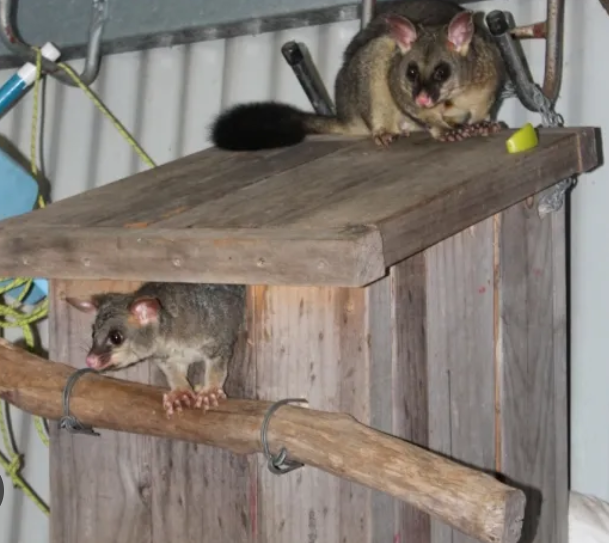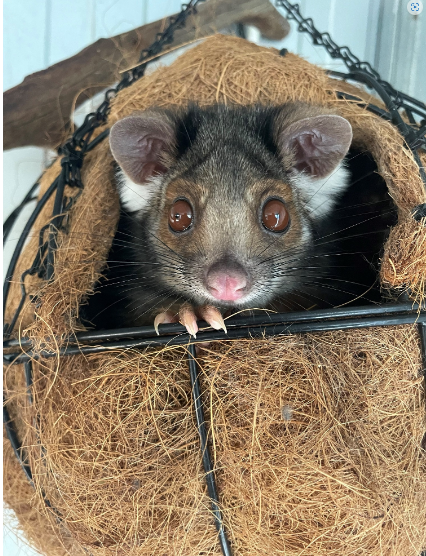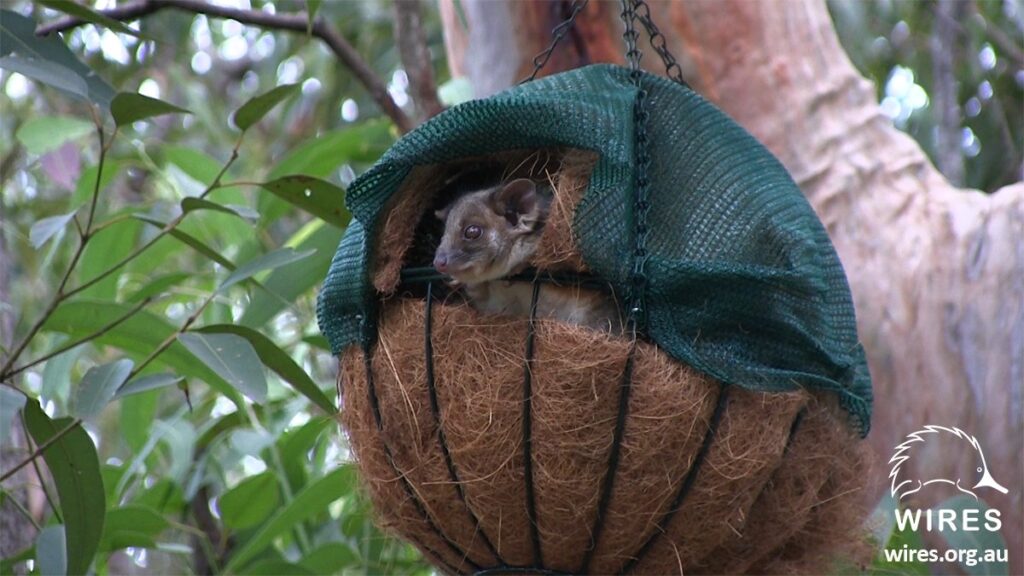Due to a combination of habitat destruction, introduced pest species and more traffic, our local possum species are in decline!
With less habitat available to them due to our expanding city, one thing you can do to help out our fury friends, is to provide them with some accomodation. This may be either a possum box, or a drey, depending on the species.
Ringtail possums will be happy with either a possum box or a possum drey. Ringtails are a small species that only grow to 1kg, allowing them to fit into either of these styles of accommodation. Brushtail possums, however, are a larger species and need a possum box.
Let’s learn a bit more about both, and how we can make our own possum drey at home!
Possum Boxes

If you would like to provide safe and sturdy accommodation for your backyard possum, you can choose to purchase (or make) a possum box. Possum boxes can be purchased from a number of different places by searching “ringtail possum box” or “brushtail possum box” online. You can purchase them already assembled, or flat-packed. You can also find instructions on how to make a possum box from spare materials you might have around the home. Note that marine ply is the best to use as it is designed to be out in the weather.
Before purchasing your possum box, ensure sure you are buying the correct kind for the possum you are wishing to accommodate. They will often have different size openings depending on whether it is for a ringtail or a brushtail species. The entrance hole will be larger for a brushtail possum as they are a larger species. The door should not be larger than necessary, as it can allow predators such as owls and cats access into the box. We recommend gluing a piece of carpet or plush quality fake turf, to the underside of the roof to deter bees from building a hive within the box.
Possum Dreys

For ringtail possums, you can also choose to make a possum drey. Try to use friends, neighbours and community Facebook groups to gather the tools and materials required.
We’ve included our material list and instructions below, but also check out this great instructional video from WIRES, a wildlife rescue organisation based in NSW.
Materials:
- 2 x hanging basket (approx. 30cm diameter each)
- Cable ties OR jute twine
- Scissors
- Bolt cutters (for cutting one piece out of the wire frame to ensure the door entrance will be big enough)
- Tin snips (the coconut fibre of hanging baskets can be tricky to cut with scissors and is far easier to cut with tin snips)
- Tarp (optional)
Instructions:
- Remove the chains from both hanging baskets, and set them aside.
- The bottom basket will remain as-is. The top basket will be upside down and with its coconut fibre on the outside rather than inside (otherwise the roof would collapse on the possum).
- Using bolt cutters, a piece of metallic frame is cut from the top basket to make a door opening big enough for a possum to enter and exit.
- Using tin snips, the coconut fibre is cut out of the entrance door. Only cut the sides, and cut horizontally in the middle of the entrance hole. You will then have pieces still attached at the top and bottom that you can use to wrap upwards and downwards to cover the piece of entrance door that you have cut, which will protect the possum against getting scratched each time it enters or exits the drey.
- Anchor the corners of the protection pieces with cable tie or jute twine.
- If desired, a layer of tarp can be added onto the outside of the roof for extra protection from rain and heat/cold. If using a double-sided tarp that is silver on one side and green on the other, it is silver side up to repel heat (good for summer) or green side up to attract warmth (good for winter).
- Use cable ties or jute twine to attach the top and bottom baskets together, and then use scissors to trim off the excess pieces of cable tie or jute.
- If adding a tarp layer, use scissors to spear holes in the corners of the tarp (not too close to its edges or it will pull apart when anchoring it to the drey) and then use cable ties or jute twine to anchor the tarp edges to the wire frame of the baskets. Then use scissors to trim excess cable tie or jute twine.
- Take one of the basket chains and use it to attach each of its hooks to the horizontal rims of the baskets (where the two baskets join). Take care to get both rims into each hook.
- Your drey is ready for installation. Think about positioning. Ideally it will be in a tree where there is camouflage against predators, and easy steps in and out on the branches. The foliage would also provide sun protection. Use something sturdy to attach your drey, such as cable ties or rope that is thin enough to thread through the wires but thick enough to last a long time. Cable ties are often not long enough to make it all the way around thick branches. Also try to anchor it from its base to stop it from swinging about when the possum is climbing in or out of the drey. Ideally do not face the entrance hole west or east or it will cop full sun at some stage in the day.
- Think about how to attract attention to your drey. Possums have incredible sense of smell. A good idea is to pop some flowers in there to attact your possum’s attention. They’ll smell the flowers and come for a nibble and then realise there’s a great dwelling for them to move into. IMPORTANT – do not just put any flowers in the drey, as some are of no interest to possums, may encourage insects that will bite, or may be toxic if eaten. Suitable flowers include bottlebrush, grevillea and roses.



Thank you to wildlife carer Jacqui Middleton from Wyndham’s Ringtail Possum Retreat for compiling this information.
